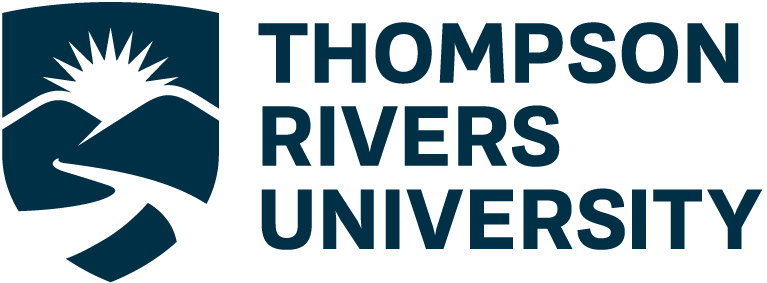Truth and Reconciliation 94 Calls to Action Explained.

What are the Truth and Reconciliation 94 Calls to Action, and how can we better engage with them?
Within current academic discourse there is a lot of discussion surrounding reconciliation, particularly centering around the Truth and Reconciliation Commissions 94 Calls to Action. Although these are referenced frequently, many students and academic staff still struggle to understand their purpose, and how to practically apply them to their specific departments.
Within this article I will break down the context they emerged from, simplify the subjects within the Calls to Action, discuss what’s been done so far and provide resources to help those within the field of education better engage with them on a daily basis.
Note about terminology:
Indigenous is used throughout this article to refer to First Peoples of what is now known as Canada, a practice which respects Indigenous Peoples connections to their land and respects their claims over it. The word “Indian” will only be used when referring to legal actions made by the government of Canada that tie to the Indian Act. The use of the term Aboriginal will only be used when referencing specific positions named within the 94 Calls to Action.
The Creation of the Truth and Reconciliation Commission
The Truth and Reconciliation Commission was founded on June 2nd, 2008 as one of the results of the Indian Residential School Settlement agreement in 2007 which was one of the largest class-action lawsuits in all of Canada’s colonial history.
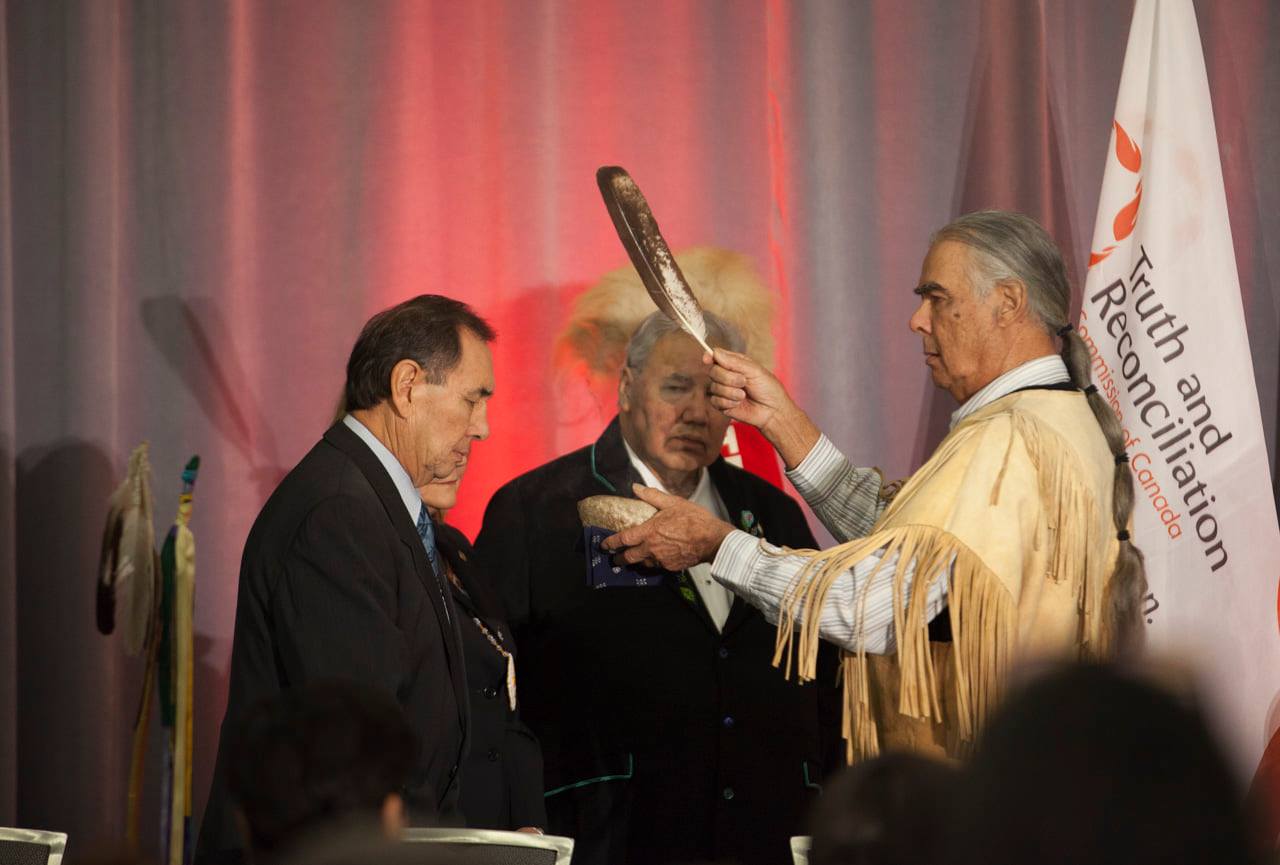
The Settlement Agreement represents the consensus reached between legal counsel for former students, legal counsel for the Churches, the Assembly of First Nations, other Indigenous organizations and the Government of Canada.
This agreement created a few national processes, such as the Independent Assessment Process (IAP) and the Truth and Reconciliation Commission of Canada (TRC)
This commission was an official independent body advised by a 10-member Indian Residential Schools Survivor Committee, made up of residential school Survivors from across Canada.
This commission lasted until December 18th, 2015 and in that time they gathered statements and documented truths from communities, residential school survivors, their families and anyone personally affected by residential school experiences. They also worked tirelessly to educate Canadians about the atrocities of Residential Schools through many community events and gatherings.
The TRC concluded its mandate in 2015 and transferred its records to the safekeeping of National Centre for Truth and Reconciliation (NCTR).
The TRC prepared a comprehensive report on the policies and operations of the schools and their lasting impacts. The final report included Ten Principles for Reconciliation and 94 Calls to Action that speak to all sectors of Canadian society.
94 Calls to Action
When the report came out in 2015, the Truth and Reconciliation Commission published 94 “Calls to action” that urged all sectors of society, and all levels of government, to work together to change their policies and programs in a concerted effort to repair the harm caused by residential schools and move forward with reconciliation.
Truth and Reconciliation Commissioner Senator Murray Sinclair states that the residential school system is our shared history, and these calls to action were developed to give people a roadmap as to how to navigate reconciling the past. The first step is to become familiar with the Calls to Action, and implement them into our personal and professional environments wherever possible.
Let’s take a closer look at the Calls to Action:
These 94 Calls to Action can be broken down into six categories: Child Welfare, Education, Language & Culture, Health, Justice, and Reconciliation.
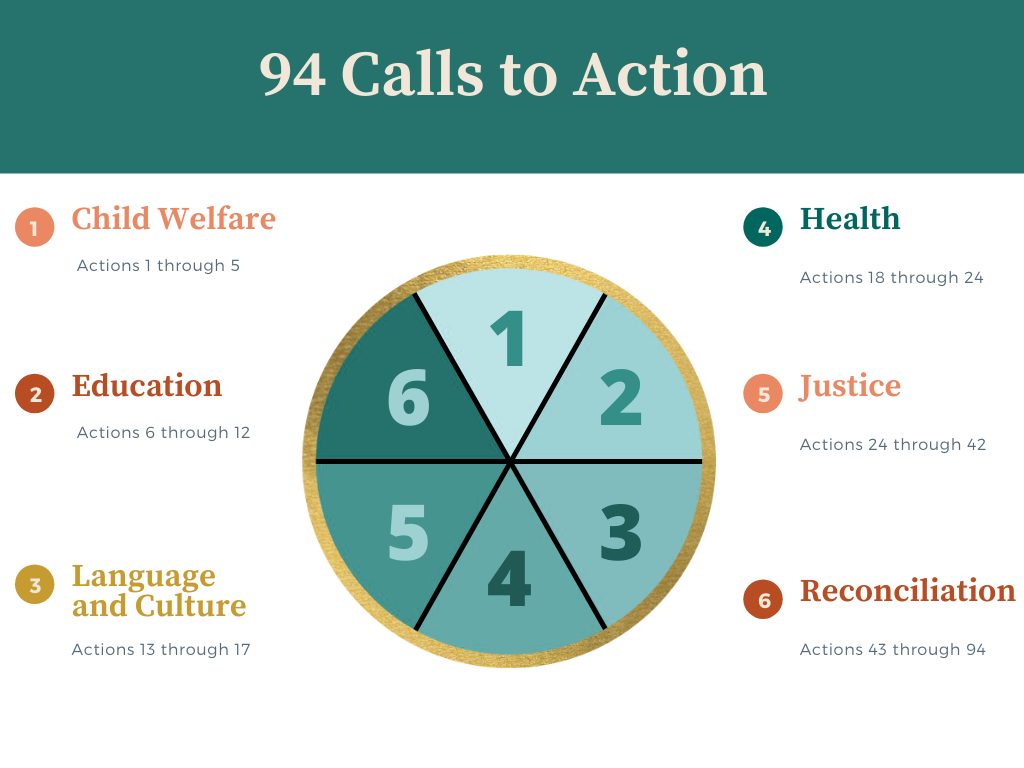
Within these six categories, specific actions are requested of the Federal, Provincial and Municipal government, as well as of specific sectors of society such as education.
The following sections will simplify the Calls to Actions within each of the six categories and outline what is stated as necessary by the Truth and Reconciliation Commission to combat the negative legacy of residential schools.
Child Welfare:
- Commitment to reduce the number of Indigenous children in care. Steps to make this happen include ensuring social workers and organizations are trauma informed and culturally competent, providing resources that are easily accessible to enable families to be kept together whenever safe, and that the impact of residential schools are considered before each decision is made.
- Assuring that children are in a culturally appropriate environment regardless of where they are.
- Demand clear and transparent reports about the number of Indigenous children in care, as well as reason for apprehension, spending on preventative care, and the effectiveness of various interventions.
- Affirms the right of all Indigenous Nations to establish and maintain their own child welfare agencies and calls upon all levels of government to develop culturally appropriate parenting programs to support families prior to involvement in the system.
- Implement Jordan’s principle – a service that pays for the needs of Indigenous children, and assures they have no barriers to access the products, services and supports they need.
Education:
- Calls upon the government to repeal section 43 of the Canadian Criminal Code – which refers to the legality of parents, teachers, or those standing in place for a parent to use force to correct children’s behavior if it’s considered “reasonable” under the circumstances.
- Federal government in conjunction with Indigenous nations, must develop a joint strategy to eliminate education and employment gaps between Indigenous and non-Indigenous Canadians. This can be done by eliminating funding discrepancies for those who live on reserves, publishing annual reports that transparently compare the funding discrepancies, as well as the employment and education gaps.
- Federal government must draft new Indigenized curriculum with full participation, as well as free, prior, and informed consent of Indigenous peoples. Requires culturally appropriate curriculum, protection of the rights of Indigenous languages, encouragement for parents and community to fully participate in schools, and fully honoring the treaty agreements.
- Funding to close the gaps of access and end the backlog of Indigenous students seeking post-secondary education.
- Develop culturally appropriate early childhood education programs for Indigenous families and future educators.
Language and Culture:
- Recognition and acknowledgement that Indigenous rights include language rights.
- Enact an Aboriginal Languages Act that asserts that Indigenous languages are valued and fundamental to Canadian society, and there must be an urgency to preserve them.
- The Federal government has a responsibility to provide funds for preservation and revitalization, and these funding initiatives must reflect the diversity of the languages as well as be managed by Indigenous peoples and communities.
- Post-Secondary institutions are asked to create University and College degree and diploma programs in local Indigenous languages.
- Appointment of an Aboriginal Languages Commissioner to help promote learning of languages, as well as to report on the Federal funding of current initiatives.
- All levels of government must enable residential school survivors and their family members to reclaim names that were changed by these institutions, and make it accessible by waiving costs associated with the process.
Health:
- Governments of all levels must acknowledge that the current state of Indigenous health is a direct result of prior Canadian government policies, and due to this it is necessary to recognize and implement the health care rights of Indigenous peoples as identified in International law, Constitutional law, and treaty agreements.
- The Federal government must consult with Indigenous peoples to establish measurable goals to identify and close the gaps in health outcomes.
- Assure that Metis, Inuit, and First Nations people who reside off reserves do not get lost in jurisdictional disputes while their health is not being taken care of.
- Provide sustainable funding for existing and new Indigenous healing centers to address the mental, physical, emotional, and spiritual harms of residential schools.
- Incorporating more traditional and cultural healing practices into the treatment of Indigenous patients within mainstream government run health systems, in collaborating with healers and Elders, when requested by the patient.
- Increase the number of Indigenous health care professionals and ensure better retention of these health care workers. In addition, create in-depth cultural competency training for all health care professionals currently working.
- Require courses that focus on Indigenous health issues within Medical and Nursing schools’ country wide. This would include skills-based training, intercultural competency, human rights, conflict resolution, and anti-racism training that is grounded in an understanding of the history and legacy of residential schools.
Justice:
- Federal government must amend state of limitations so that historical abuse against Indigenous peoples can be prosecuted.
- Establish protocols to assure that Royal Canadian Mounted Police investigations into government crimes is done impartially.
- Assure that those working in the legal field receive adequate cultural competency training, as well as mandating courses that teach the historical background of Indigenous people’s experiences with Canadian law which includes residential schools.
- Commit to eliminating the over representation of Indigenous adults and youth in custody and report constant transparent progress on how this is happening.
- Create and fund community sanctions that provide realistic alternatives to imprisonment, so that underlying causes of offending can be targeted and dealt with.
- Focus on preventing Fetal Alcohol Spectrum Disorder in a culturally appropriate manner
- All government levels to undertake reforms to the Criminal Justice System in conjunction with Indigenous nations, to better address the needs of offenders with Fetal Alcohol Spectrum Disorder.
- Provide culturally relevant services to inmates to help heal systematic and individual traumas. Alongside this, there should be the creation of additional healing lodges, as well as cultural supports in halfway houses and parole services.
- Collect and publish data on the criminal victimization of Indigenous people that includes homicide and family violence. Once started, the creation and funding of accessible Indigenous specific victims’ programs is a necessity.
- Appoint a public inquiry into the causes and remedies for the disproportionate victimization of Indigenous women, girls and 2 spirit relatives.
- Have all levels of government commit to recognizing the legitimacy of Indigenous justice systems, and implement their solutions into the criminal justice system.
Reconciliation:
This is by far the largest section within the 94 Calls to Action, and cannot be easily simplified due to its complex and multi-departmental approach. The main topics within this section though are as follows:
- Canadian Government and the UN Declaration on the Rights of Indigenous People
- Royal Proclamation and Covenant of Reconciliation
- Settlement Agreement Parties and the UN Declaration of Rights of Indigenous People
- Equity for Aboriginal people in the legal system
- National Council for Reconciliation
- Professional Development and Training for Public Servants
- Church Apologies and Reconciliation
- Education for Reconciliation
- Youth Programs
- Museums and Archives
- Missing Children and Burial Information
- National Centre for Truth and Reconciliation
- Commemoration
- Media and Reconciliation
- Sports and Reconciliation
- Business and Reconciliation
- Newcomers to Canada
Measuring Progress and Implementing Change

It’s now been seven years since the initial report was released by the Truth and Reconciliation Commission, but what has changed?
The organization Beyond 94, which was created by the CBC Indigenous Unit, allows the public to track up to date outcomes on the Calls to Action.
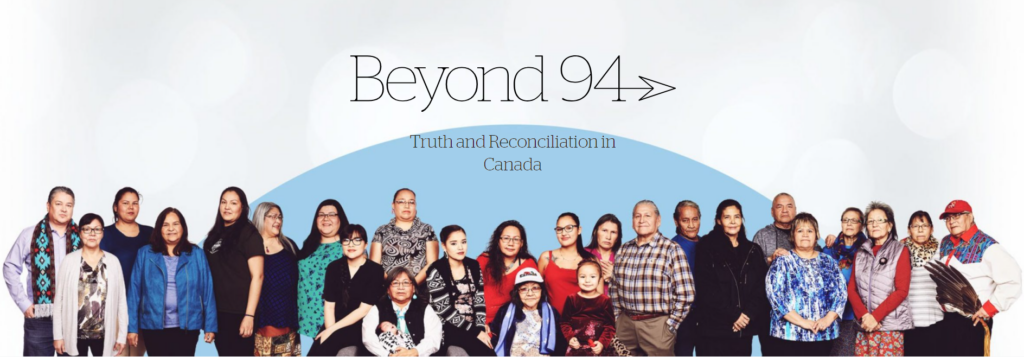
This organization reaches out to government agencies, faith groups, professional institutions and community organizations for their statements of progress. Once they are collected, each statement is fact-checked thoroughly.
As it stands currently, only thirteen of the 94 calls to action have been completed.

The image above comes directly from Beyond 94‘s website which can be found at https://newsinteractives.cbc.ca/longform-single/beyond-94?&cta=26
On this website, you are able to view each action taken and the Call to Action it relates to. This project is a living resource that features not only the action items, but also new documentaries, residential school survivor stories, community based ideas and actions around reconciliation.
As only 13 of the 94 Actions have been successfully implemented, its important that each of us internalize our responsibility for furthering these calls to action in both our personal and professional lives.
How can we as individuals practically implement the TRC’s Calls to Actions?
The very first step is always to educate yourself, but to be a true ally one needs to start the work by creating more awareness, justice, understanding and equity at both the personal and professional level.
If you’re working in education or within an academic institution, some beginning questions to ask yourself would be:
- Which calls apply to the work you do?
- How can you share it with your students?
- In what other ways can you, your department, your faculty, and your field support it?
Acknowledging the Indigenous lands of which you reside on is one piece of the puzzle, but land acknowledgements are meant to be an obligation to the Nations rather than a one-off statement to quell our discomfort. Consistency and actions are key, and in order to make systematic change we must be willing to back up words with genuine advocacy.
One meaningful way to begin engaging with Indigenous methods if you are an educator or future educator is through: Pulling Together: A Guide for Indigenization of Post-Secondary Institutions

This resource is extremely helpful, and guides those working in educational institutions through meaningful integration of Indigenous knowledge, how to develop awareness of one’s own role in reconciliation, and how to promote social change. This series also features guides for front-line staff, students, teachers, and administrators to support the systemic change occurring across post-secondary institutions through Indigenization, decolonization, and reconciliation.
If you are a person from the Christian faith, the organization KAIROS has been working to unite churches to work on the Calls to Action that are relevant to creating change and promoting accurate cultural advocacy within both church environments and educational facilities.
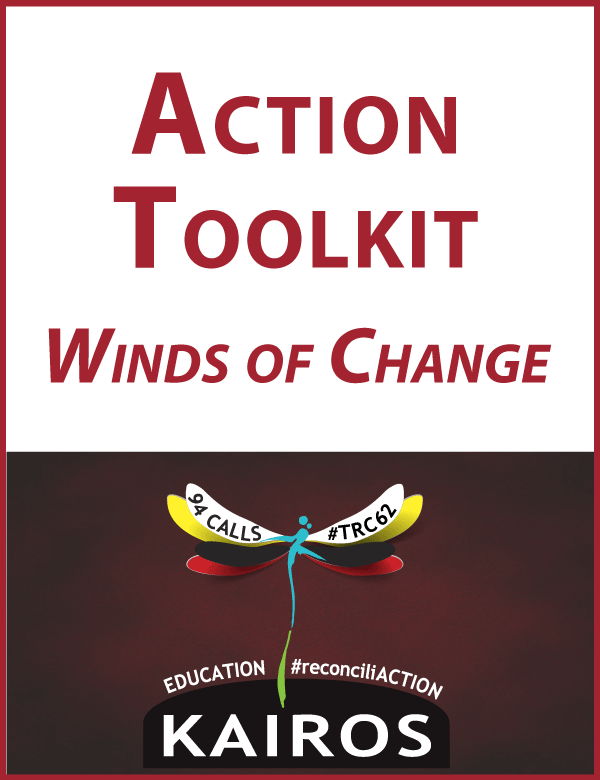
The free resource: Education for Reconciliation Action Toolkit offers workshops to introduce the faith community to the TRC, short sample introductions to use within conversations and during announcements, and assistance with creating age appropriate curriculum discussing residential schools.
The Indigenous Arts, Culture and Heritage webpage within the Government of Canada’s website is a wonderful resource that is rich with diverse voices, experiences and learning aids.
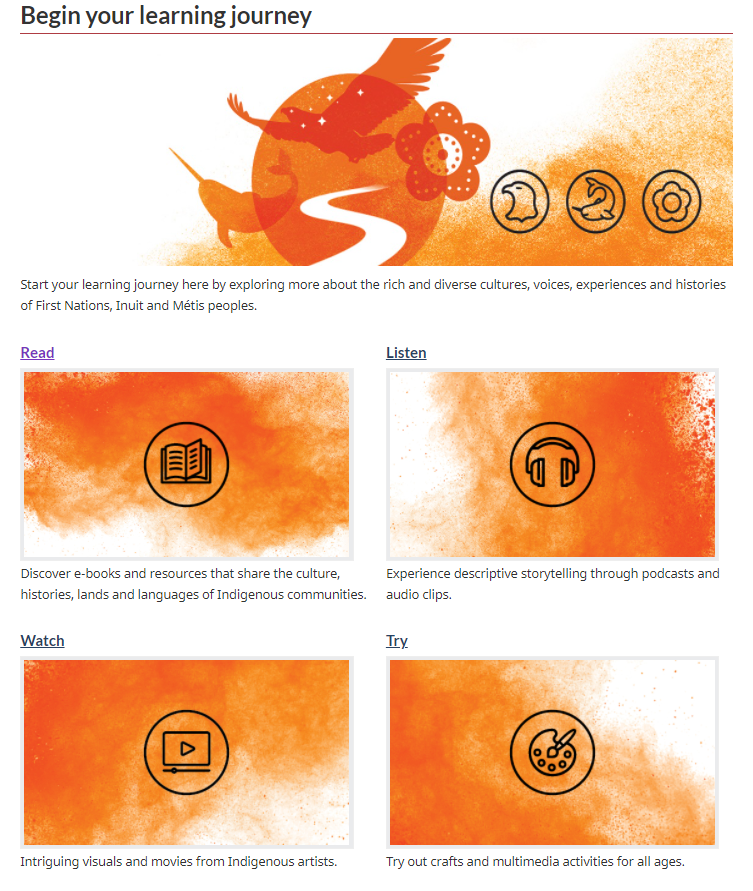
Within this webpage you can discover free e-books, podcasts, audio clips and videos which share the culture, histories, languages and experiences of Indigenous Nations across the country.
There are also multiple teaching and education resources such as books for all age levels to use in lesson plans, educational videos discussing large concepts in a simplified manner for youth, and a children’s guide to the TRC’s 94 Calls to Action.
Other incredibly helpful resources that can be used for daily learning or implemented into a classroom environment, regardless of whether you are a student or teacher include the following:
Interactive Residential School Location Map
This resource can be used to assist people in locating the closest residential school to the community they grew up, and shows the years in which the school was in operation.
https://www.cbc.ca/news2/interactives/beyond-94-residential-school-map/
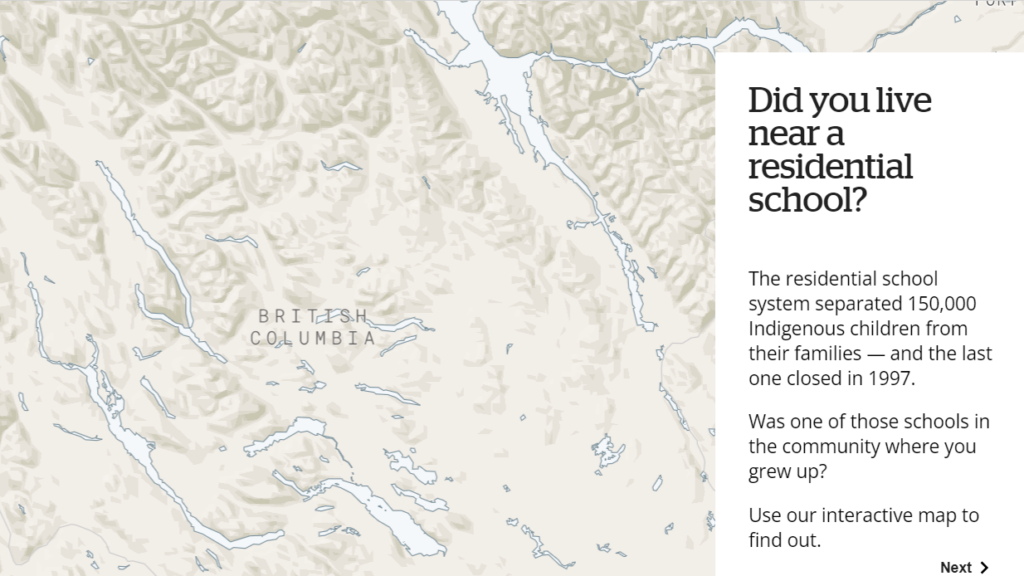
First Peoples’ Map by the First Peoples Cultural Council
The First Peoples’ Map of B.C. is a living and interactive space that represents our diverse yet interwoven languages, arts, and cultural heritage. Within this map you are able to hear the pronunciation of language names, greetings, places as well as browse traditional art and community landmarks.
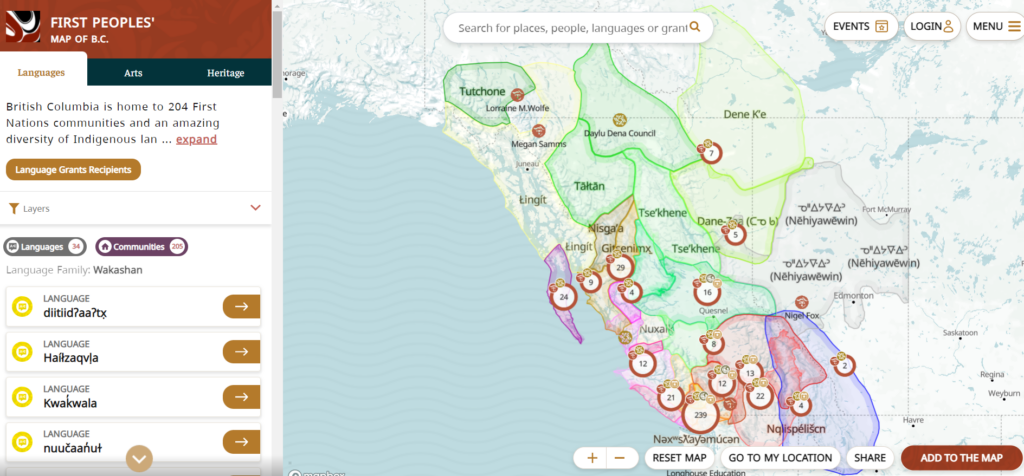
First Nations Child & Family Caring Society: Reconciling History
This websites mission is to assure that Indigenous and non-Indigenous peoples in Canada have a true and complete understanding of history, so that we can contribute to reconciliation in meaningful ways.
Reconciling History provides an opportunity to learn about Canada’s treatment of Indigenous children and families in a way that links lessons of history to contemporary injustices.
This website also includes 7 free ways to make a difference through campaigns that look out for the inherent human rights of Indigenous children and provides tangible ways to contribute to eradicating discrimination.
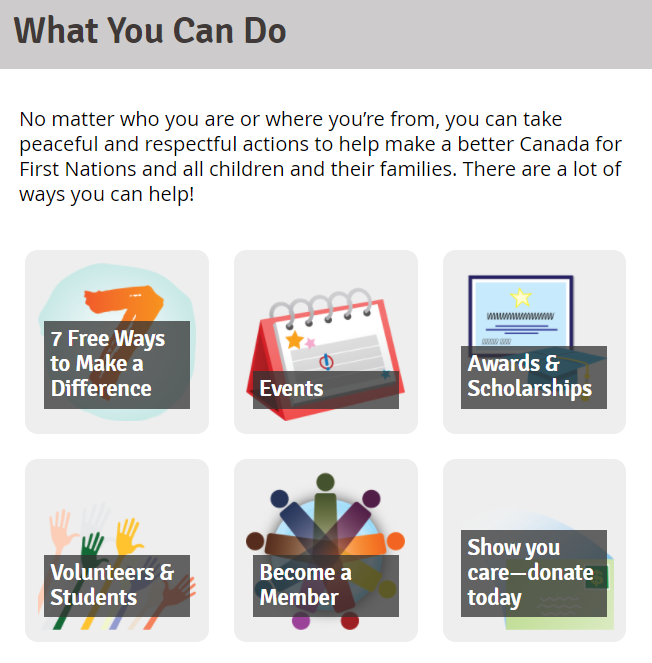
No matter who you are, or what your position is in society, you can engage in truth and reconciliation in a meaningful way.
The most important thing an individual can do is to listen and learn from the Indigenous peoples and communities around you. Educate yourself first as to the history of Indigenous relationships with Canada so that Indigenous people are not burdened with the labor of educating you, and then seek out ways to incorporate this new knowledge into your professional and personal lives.
We cannot put this off. The task is huge, the journey will be long, but that is our responsibility. Hopefully through this article you have gained a better sense as to the purpose of the TRC’s 94 Calls to Action and their content, and will continue this work by utilizing available free resources and standing up for Indigenous rights in all situations.
Written by Jeneen Herns-Jensen
January 31st, 2022
